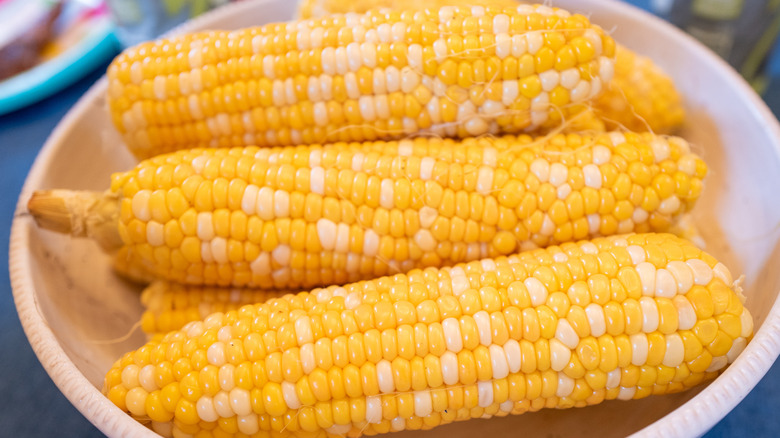Why We Call Corn Cobs 'Ears'
Whether you wrap corn on the cob in decadent bacon, or simply smother it in butter and salt, fresh ears of corn are an unquestionably delicious summertime treat. However, no matter how you enjoy fresh corn on the cob, you may have wondered why we call them "ears" of corn — especially since their resemblance to hearing organs is shaky at best. It turns out that ears of corn and the ears on your head have completely unrelated etymological roots.
In the hearing context, the word ear comes from the Old English "eare," which in turn developed from the Proto-Germanic "auso." Ear, in reference to corn, can be traced back to the Old English "aeher," which came from the Proto-Indo-European term "ak," which means sharp — and presumably references the jutting position of an ear of corn. In other words, an ear of corn and the ears we hear with are two completely different words that happen to have the exact same letters, and are pronounced exactly the same way. This etymological coincidence has, naturally, inspired many a corny joke.
Other theories for calling corn cobs 'ears'
Although the etymological explanation for why corn cobs are called ears is widely accepted and evidence-backed, that hasn't stopped other creative (but incorrect) theories from developing. Some argue that ears of corn stick out just like the ones on your head, while others posit that ears of corn look quite similar to donkey ears. Still others suggest that the corn uses its ears to hear, just like humans do. While quite entertaining, these theories are, unfortunately, not based on any factual evidence.
Interestingly, when used in an agricultural context, the term ear technically refers to the seed-containing part of any cereal plant. Ears of corn are certainly the most widely recognized cereal ears, but if you'd like to sound fancy and confusing to your friends, feel free to drop references to ears of oat or wheat into your conversations. In any case, you can select the best corn possible with a simple silk test, and use one of our favorite cooking methods to make corn on the cob even more delicious.

